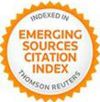Abstract
This paper investigates the capabilities of artificial intelligence to support the architectural drawing process through a style transfer experiment. The goal is to transfer Frank Lloyd Wright's drawing style to contemporary photographs, evaluating how the algorithm can replicate the distinctive features of Wright's graphic language. The proposed method explores the potential of AI not only as a technical tool, but also as a creative medium capable of reinterpreting complex styles. The results highlight implications for architectural design, offering new perspectives on the use of AI to innovate visual design and stylistic exploration.
Keywords
Full Text:
PDFDOI: http://dx.doi.org/10.2423/i22394303v14n2p31
References
Almusaed, A., & Yitmen, I. (2023). Architectural Reply for Smart Building Design Concepts Based on Artificial Intelligence Simulation Models and Digital Twins. Sustainability 15(6), 4955. https://doi.org/10.3390/su15064955
Arnheim, R. (1965). Art and visual perception: A psychology of the creative eye. Berkeley: University of California Press.
Baldassarre, M. T., Gigante, D., Kalinowski, M., Ragone, A., & Tibidò, S. (2024). Trustworthy AI in practice: an analysis of practitioners’ needs and challenges. In EASE ’24: Proceedings of the 28th International Conference on Evaluation and Assessment in Software Engineering, (pp. 293–302). Salerno, Italy: Association for Computing Machinery.
Baroš, T., Kabošová, L., Baros, M., & Katunský, D. (2022). Experimental Form-finding: A review. In IOP Conference Series: Materials Science and Engineering, 1252. Bristol, United Kingdom: IOP Publishing.
Bianconi, F., & Filippucci, M. (2019). WOOD, CAD AND AI. Digital modelling as place of convergence of Natural and Artificial Intelligent to design timber architecture. In Digital Wood Design (Vol. 1). Springer.
Bianconi, F., Filippucci, M., & Pelliccia, G. (2024). Inverse Models. Analog as Verification of the Digital. DISEGNO, 14, 121–132. https://doi.org/doi.org/10.26375/disegno.14.2024.12
Bianconi, F., Filippucci, M., Seccaroni, M., Rolando, A., & D’Uva, D. (2023). Machine learning and landscape quality. Representing visual information using deep learning-based image segmentation from street view photos. SCIRES-IT - SCIentific RESearch and Information Technology, 13(1), 117–134. http://dx.doi.org/10.2423/i22394303v13n1p117
Bölek, B., Tutal, O., & Özbaşaran, H. (2023). A systematic review on artificial intelligence applications in architecture. Journal of Design for Resilience in Architecture and Planning, 4, 91-104.
Brisco, R., Hay, L., & Dhami, S. (2023). Exploring the role of text-to-image AI in concept generation. Proceedings of the Design Society, 3, 1835–1844.
Brozovsky, J., Labonnote, N., & Vigren, O. (2024). Digital technologies in architecture, engineering, and construction. Automation in Construction, 158.
Cantemir, E., & Kandemir, O. (2024). Use of artificial neural networks in architecture: determining the architectural style of a building with a convolutional neural networks. Neural Computing and Applications, 36.
Castells, M. (2002). Galassia internet. Milano, Italy: Feltrinelli.
Castro Pena, M. L., Carballal, A., Rodríguez-Fernández, N., Santos, I., & Romero, J. (2021). Artificial intelligence applied to conceptual design. A review of its use in architecture. Automation in Construction, 124.
Chaillou, S. (2019). AI + Architecture | Towards a New Approach. Cambridge, Massachusetts: Harvard University Press.
Chen, J., Shao, Z., & Hu, B. (2023). Generating Interior Design from Text: A New Diffusion Model-Based Method for Efficient Creative Design. Buildings, 13(7), 1861. https://doi.org/10.3390/buildings13071861
Chen, J., Wang, D., Shao, Z., Zhang, X., Ruan, M., Li, H., & Li, J. (2023). Using Artificial Intelligence to Generate Master-Quality Architectural Designs from Text Descriptions. Buildings, 13(9). https://doi.org/10.3390/buildings13092285
De Rubertis, R. (1994). Il Disegno dell’Architettura. Torino, Italy: NIS.
Del Campo, M. (2022). Machine Hallucinations: Architecture & Artificial Intelligence. Architectural Design, 92(3), 1-114.
Esling, P., & Devis, N. (2020). Creativity in the era of artificial intelligence. In Journées d’Informatique Musicale 2020 – Préactes. Paris, France: Sorbonne Universite.
Filippucci, M. (2023). Generative revolution: representative experimentations at the frontieries of computational design. Digital & Documentation. The New Boundaries of Digitization, IV, 142–161.
Filippucci, M., Bianconi, F., & Andreani, S. (2016). Computational Design and Built Environments: the Quest for an Alternative Role of the Digital in Architecture. In Visual Computing and Emerging Geometrical Design Tools (Vol. 2, pp. 790–824). IGI Global.
Forsyth, A. (1999). The Information Age: Economy, Society and Culture. Journal of Planning Education and Research, 19(2), 211–213.
Gobet, F., & Sala, G. (2019). How Artificial Intelligence Can Help Us Understand Human Creativity. Frontiers in Psychology, 10, 1401.
Harapan, A., Indriani, D., Rizkiya, N. F., & Azbi, R. M. (2021). Artificial Intelligence in Architectural Design. International Journal of Design, 1, 1-6.
Hensel, M., & Menges, A. (2006). Morpho-ecologies. London, United Kingdom: Architectural Association.
Hoffmann, D. (1995). Understanding Frank Lloyd Wright's Architecture. Mineola, NY: Dover Publications.
Hu, E. J., Shen, Y., Wallis, P., Allen-Zhu, Z., Li, Y., Wang, S., Wang, L., & Chen, W. (2021). LoRA: Low-Rank Adaptation of Large Language Models. ArXiv preprint. Retrieved from https://arxiv.org/abs/2106.09685
Husserl, E. (1960). Esperienza e giudizio. Milano, Italy: Silva Ed.
Iafrate, F. (2018). Artificial intelligence and big data: the birth of a new intelligence. Hoboken, New Jersey: John Wiley & Sons.
Ji, L. (2022). Application and Optimization of Artificial Intelligence Technology in Architectural Design. Wireless Communications and Mobile Computing, 2023(1).
Jo, H., Lee, J.-K., Lee, Y.-C., & Choo, S. (2024). Generative artificial intelligence and building design: early photorealistic render visualization of façades using local identity-trained models. Journal of Computational Design and Engineering, 11, 85–105.
Ke, Z., Liu, Y., Zhu, L., Zhao, N., & Lau, R. W. H. (2023). Neural Preset for Color Style Transfer. 2023 IEEE/CVF Conference on Computer Vision and Pattern Recognition (CVPR), 14173–14182.
Kissinger, H. A., Schmidt, E., & Huttenlocher, D. (2023). L’era dell’intelligenza artificiale. Milano, Italy: Edizioni Mondadori.
Li, H., Wu, Q., Xing, B., & Wang, W. (2023). Exploration of the intelligent-auxiliary design of architectural space using artificial intelligence model. PLOS ONE, 18(3).
Luo, G., Han, Y. T., Mou, L., & Firdaus, M. (2023). Prompt-Based Editing for Text Style Transfer. Conference on Empirical Methods in Natural Language Processing. Conference on Empirical Methods in Natural Language Processing, 5740-5750.
McLuhan, M. (1964). Understanding Media. New York, NY: McGraw-Hill Book Company.
Menges, A., & Ahlquist, S. (2011). Computational design thinking. Hoboken, New Jersey: John Wiley & Sons.
Paananen, V., Oppenlaender, J., & Visuri, A. (2023). Using Text-to-Image Generation for Architectural Design Ideation. International Journal of Architectural Computing, 0(0).
Pan, Z., Zhou, X., & Tian, H. (2022). Arbitrary Style Guidance for Enhanced Diffusion-Based Text-to-Image Generation. 2023 IEEE/CVF Winter Conference on Applications of Computer Vision (WACV), 4450–4460.
Paoletti, I. (2018). Mass customization in the era of industry 4.0: towards immaterial building technology. In M. Hemmerling & L. Cocchiarella (Eds.), Informed architecture: computational strategies in architectural design (pp. 77-87). Cham, Switzerland: Springer.
Pfeiffer, B. B., & Goessel, P. (2015). Frank Lloyd Wright. Hawthorne, California: GF Books Inc.
Purini, F. (2022). Discorso sull’architettura. Venezia, Italy: Marsilio Editori.
Renner, G., & Ekárt, A. (2003). Genetic algorithms in computer aided design. Computer-Aided Design, 35(8), 709–726.
Ruiz, N., Li, Y., Jampani, V., Pritch, Y., Rubinstein, M., & Aberman, K. (2023). DreamBooth: Fine Tuning Text-to-Image Diffusion Models for Subject-Driven Generation. 2023 IEEE/CVF Winter Conference on Applications of Computer Vision (WACV), 22500-22510.
Schumacher, P. (2009). Parametricism: A new global style for architecture and urban design. Architectural Design, 79(4), 14–23.
Sun, M., Zhang, F., Duarte, F., & Ratti, C. (2022). Understanding architecture age and style through deep learning. Cities, 128, 103787.
Taj, I., & Jhanjhi, N. Z. (2022). Towards Industrial Revolution 5.0 and Explainable Artificial Intelligence: Challenges and Opportunities. International Journal of Computing and Digital Systems, 12(1), 2210–142.
The Frank Lloyd Wright Digital Archive. Retrieved from https://www.jstor.org/
Verganti, R., Vendraminelli, L., & Iansiti, M. (2020). Innovation and Design in the Age of Artificial Intelligence. Journal of Product Innovation Management, 37, 212-227.
Viliunas, G., & Gražulevičiūtė-Vileniškė, I. (2022). Shape-finding in Biophilic Architecture: Application of AI-based Tool. Architecture and Urban Planning, 18, 68–75.
Wang, Z., Zhao, L., & Xing, W. (2023). StyleDiffusion: Controllable Disentangled Style Transfer via Diffusion Models. 2023 IEEE/CVF International Conference on Computer Vision (ICCV), 7643–7655.
Zevi, B. (1947). Frank Lloyd Wright. Milano, Italy: Il Balcone.
Article Metrics
Metrics powered by PLOS ALM
Refbacks
- There are currently no refbacks.
Copyright (c) 2024 Fabio Bianconi, Marco Filippucci, Andrea Migliosi, Chiara Mommi

This work is licensed under a Creative Commons Attribution-NonCommercial-NoDerivatives 4.0 International License.
SCIRES-IT, e-ISSN 2239-4303
Journal founded by Virginia Valzano





